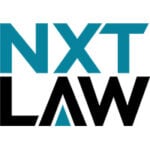-
Please provide a high-level overview of the blockchain market in your jurisdiction. In what business or public sectors are you seeing blockchain or other distributed ledger technologies being adopted?
In recent years, Mainland China has established blockchain technology as a key infrastructure and strategic industry for the digital economy. According to IDC, China’s blockchain market is projected to exceed USD 3.2 billion by the end of 2025, with a compound annual growth rate (CAGR) of 47% between 2020 and 2025. Grand View Research estimates that the market will reach USD 71.9 billion by 2030, at a CAGR of 89.1%. Globally, the blockchain market is anticipated to reach approximately USD 50 billion in 2025.
(I) Policy-Driven Initiatives and Continuous Improvement of Industrial Foundations
Since China first incorporated blockchain into its national informatization plan in 2016, national-level policies have continuously been introduced to support the industry. In 2021, the State Council issued important guiding opinions to provide a regulatory foundation for industrial development. The following year, the Cyberspace Administration of China led the publication of the 2025 China Blockchain Innovation Application Development Report, selecting multiple innovative pilot cases across 16 application areas, including government services, judicial trials, copyright, and trade finance. Local governments have also actively responded, with Shanghai, Beijing, and Guangdong leading in policy enthusiasm, while Kunming and Qianhai have further integrated blockchain with large language models, promoting the digital transformation of the real economy.(II) Synchronous Advancement of Infrastructure and Standards
At the technological level, China’s domestic blockchain ecosystem has matured rapidly. Core platforms such as Chang’an Chain, AntChain, FISCO BCOS, and XuperChain have become mainstream choices, with significant enhancements in autonomous and controllable capabilities at the underlying layer. At the same time, standard-setting has accelerated — as of 2025, a total of over 250 blockchain technology standards have been issued, covering national standards, industry standards, and group standards. Additionally, concepts such as “trusted data space” have promoted blockchain’s central role in cross-entity data circulation, reinforcing the positioning of trusted infrastructure.(III) Gradual Diversification of Application Areas
(1) Government Services
Government-led blockchain infrastructure has been widely deployed. By 2025, more than ten city-level platforms were in operation, supporting critical applications such as on-chain electronic credentials and cross-department data sharing. By 2025, more than half of the provincial-level administrative regions had deployed government blockchain platforms, with over 5 billion electronic credentials on-chain, significantly improving digital governance efficiency.(2) Judicial, Evidence Preservation, and Trusted Services
Scenarios such as judicial evidence preservation and contract management remain foundational areas for blockchain applications. These applications are widely supported by courts, notary institutions, and other organizations due to their alignment with blockchain’s data immutability characteristics.(3) Finance and Supply Chain Finance
Although overall enthusiasm in the financial market has somewhat declined, accounting for only about 7.7% of new applications, blockchain still shows resilience in areas such as cross-border payments, trade finance, and financial institution compliance (e.g., KYC, anti-money laundering).(4) Data Assets and Digital Collectibles
Applications related to data as a factor of production have grown rapidly, accounting for approximately 17.95% of new applications. Digital collectibles, such as copyright and cultural work authentication, constitute the majority of data asset applications, accounting for as much as 84.9%.(5) Energy and Green Transition
Blockchain applications are increasing in areas such as energy trading, green electricity traceability, and carbon management. As a typical scenario for on-chain trusted assets across entities, it demonstrates significant potential to expand into real industry sectors.(6) Cross-Industry Integration
Blockchain is deeply integrating with emerging technologies such as AI, big data, IoT, and the metaverse. For example, smart contracts can achieve automated execution through AI, IoT data ensures immutability, and digital asset transactions in the metaverse increasingly rely on on-chain authentication.Looking ahead, blockchain will continue to drive the evolution of digital economy infrastructure, supporting key directions such as the circulation of trusted data elements, green and low-carbon transformation, and the construction of a Web3.0 ecosystem.
-
Please outline the principal legislation and the regulators most relevant to the use of blockchain technologies in your jurisdiction. In particular, is there any blockchain-specific legislation or are there any blockchain-specific regulatory frameworks in your jurisdiction, either now or envisaged in the short or mid-term?
In Mainland China, there is no dedicated legislation specifically for blockchain technology, but relevant regulations and supervisory frameworks have been established to govern it.
On February 15, 2019, the Cyberspace Administration of China issued the Regulations on the Management of Blockchain Information Services, which is China’s first administrative regulation specifically targeting blockchain information services. The regulation clarifies requirements for blockchain information service providers regarding filing, security management responsibilities, user identity authentication, information content security management, and emergency response. It aims to standardize blockchain information service activities, safeguard national security and public interests, protect the legitimate rights and interests of citizens, legal persons, and other organizations, and promote the healthy development of blockchain technology and related services.
In addition, financial regulatory authorities such as the People’s Bank of China have issued some blockchain technology standards and assessment rules in the financial sector to regulate blockchain applications. For example, documents such as the Financial Distributed Ledger Technology Security Specification have been released to enhance blockchain’s trustworthiness and compliance foundation in finance.
However, with regard to cryptocurrency management, the Chinese government has adopted strict regulatory measures, prohibiting cryptocurrency trading and related activities. At present, there is no dedicated law governing cryptocurrencies. Meanwhile, the issuance and management of the digital RMB are regulated by existing policies and regulations. As a central bank digital currency, the digital RMB uses distributed ledger technology, but its issuance and management are still led by the People’s Bank of China, and no dedicated legislation has been enacted.
Overall, Mainland China’s legal supervision of blockchain technology remains in an exploratory and developmental stage. More detailed and specialized laws and regulations may be introduced in the future to meet the evolving development and application needs of blockchain technology. In early 2025, the government announced a USD 54.5 billion national blockchain roadmap to build comprehensive infrastructure by 2029, indicating continued emphasis on regulated blockchain development without lifting crypto bans.
-
What is the current attitude of the government and of regulators to the use of blockchain technology in your jurisdiction?
The attitude of the Chinese government and regulatory authorities toward blockchain technology reflects a combination of proactive exploration and prudent supervision. While encouraging technological innovation, they emphasize the prevention of potential risks, striving to achieve a balance between promoting development and ensuring security.
In recent years, departments such as the Cyberspace Administration of China have actively promoted the application and development of blockchain technology. For example, in May 2025, the Cyberspace Administration published the China Blockchain Innovation Application Development Report (2025), summarizing the nationwide progress of blockchain innovation applications, showcasing typical cases in finance, government affairs, and supply chains, and providing prospects for future development.
However, regulatory authorities maintain a cautious stance on the application of blockchain technology, especially in the financial sector. The People’s Bank of China and other agencies have repeatedly emphasized that although blockchain technology has potential, it also carries risks, particularly uncertainties related to financial stability and the transmission of monetary policy. Therefore, regulators stress the importance of avoiding excessive glorification of blockchain technology and advocate for steady and controlled development.
Overall, the Chinese government and regulatory authorities maintain a dual approach of actively supporting blockchain technology while exercising prudent supervision. They encourage technological innovation while focusing on risk prevention, aiming to balance the promotion of development with the assurance of security.
-
Is there a central bank digital currency (‘CBDC’) project in your jurisdiction? If so, what is the status of the project?
Mainland China is currently actively advancing the Central Bank Digital Currency (CBDC) project, namely the Digital Renminbi (Digital Currency Electronic Payment, abbreviated as DCEP). This project is led by the People’s Bank of China (PBOC) and aims to improve payment efficiency, optimize monetary policy, enhance financial inclusion, and promote the internationalization of the Renminbi.
The PBOC began research on the Digital Renminbi in 2014 and established the Digital Currency Research Institute in 2016, becoming one of the earliest official institutions globally to engage in legal digital currency development. By the end of 2017, with the approval of the State Council, the PBOC started organizing commercial institutions to jointly conduct legal digital currency development experiments. Currently, these research and development trials have basically completed top-level design, functional development, and system debugging, and are being implemented in selected representative regions following the principles of being steady, safe, controllable, innovative, and practical.
As of June 2024, the nationwide Digital Renminbi pilot program has expanded to 26 pilot areas across 17 provinces and municipalities, including Beijing, Shanghai, Jiangsu, Zhejiang, Guangdong, Sichuan, and Chongqing. The Digital Renminbi has been widely applied in areas such as daily consumption, transportation, payroll, and e-commerce, and products based on smart contracts of the Digital Renminbi have been launched, including prepaid fund management, supply chain finance, credit services, and services for small and micro enterprises.
Furthermore, the Digital Renminbi is being explored in the field of cross-border payments. For example, the Shanghai Municipal Government, together with the PBOC, the China Banking and Insurance Regulatory Commission, the State Administration of Foreign Exchange, and other departments, supports pilot banks operating Digital Renminbi in Shanghai to actively participate in multilateral central bank digital currency bridge projects and explore innovative and specialized application scenarios. In September 2025, a new digital yuan operations center was opened in Shanghai to boost global use, featuring platforms for cross-border payments and blockchain integration.
The Digital Renminbi industrial chain covers upstream areas such as cryptography and cybersecurity, midstream demands for bank IT system upgrades, and downstream elements such as payment terminals and digital wallets. Key participants include the four major state-owned banks (e.g., China Construction Bank, Industrial and Commercial Bank of China, Agricultural Bank of China, Bank of China), large payment platforms such as Alipay and Tenpay, as well as payment terminal equipment companies such as Lakala, Newland, GRG Banking, and Nationz.
In the future, the Digital Renminbi will further expand its application scenarios, including public services such as government fee payments, healthcare payments, and education payments, enhancing payment efficiency and user experience. Simultaneously, its application in cross-border payments will accelerate through cooperation with countries and regions along the Belt and Road Initiative, promoting the internationalization of the Renminbi. Additionally, the Digital Renminbi will deeply integrate with the digital economy and play a significant role in e-commerce platforms, digital content consumption, and virtual asset transactions.
-
What is the current approach in your jurisdiction to the treatment of cryptoassets and decentralised finance (‘DeFi’) for the purposes of financial regulation?
Mainland China’s regulatory policies on crypto assets and decentralized finance (DeFi) in recent years have shown a trend of “strict risk control, localized pilot programs, and gradual exploration,” reflecting a balanced approach between prudent regulation and technological innovation.
In terms of crypto assets, the Chinese government has implemented strict regulatory measures, prohibiting financial institutions from providing services related to cryptocurrencies for clients, such as account opening, transaction matching, and asset custody. At the same time, authorities have strengthened crackdowns on illegal fundraising, fraud, and other criminal activities involving crypto assets, severely punishing related cases. However, as blockchain technology is increasingly applied in the real economy, the regulatory logic is shifting from a “one-size-fits-all” approach to a more refined governance model combining restriction and facilitation. For example, in 2025, the Central Political and Legal Work Conference for the first time included virtual currencies in the “emerging field legislative research” priorities, signaling an upgrade of the regulatory framework.
In the DeFi field, regulators remain highly attentive to potential risks. Currently, China has not introduced specific laws or regulations targeting DeFi, but regulatory authorities have begun monitoring the potential risks in this area, mainly including: enhancing risk surveillance of DeFi projects to prevent possible threats to financial stability; strengthening regulatory cooperation with other countries and regions to jointly address cross-border financial risks; and some regional courts have attempted to utilize blockchain technology to enable rapid freezing and disposal of assets involved in DeFi-related cases, improving judicial efficiency.
Overall, the Chinese government and regulatory authorities maintain a prudent regulatory stance toward crypto assets and DeFi, emphasizing the importance of technological innovation while also focusing on risk prevention, striving to balance the promotion of development with ensuring safety. Investors should pay close attention to policy trends, participate cautiously in related activities, and guard against risks arising from policy changes. As of mid-2025, the ban on crypto trading and mining remains in full effect, with no indications of relaxation.
-
What is the current approach in your jurisdiction to the treatment of cryptoassets and DeFi for the purposes of anti-money laundering and sanctions?
Mainland China’s regulation of crypto assets and decentralized finance (DeFi) in the areas of anti-money laundering (AML) and financial sanctions is expanding from traditional financial institutions’ compliance requirements to the digital asset domain, reflecting a balanced approach between prudent regulation and technological innovation. The 2025 revision of the Anti-Money Laundering Law of the People’s Republic of China explicitly included virtual currencies under regulatory scope for the first time, emphasizing strengthened monitoring and management of crypto asset transactions. The People’s Bank of China and other regulatory authorities have begun requiring financial institutions to strictly monitor and flag cryptocurrency transactions, aiming to prevent capital outflows and money laundering risks, effectively incorporating crypto transactions into the financial regulatory “Skynet.”
At the judicial level, in 2025, the Supreme People’s Procuratorate emphasized strict enforcement of the revised AML law, focusing on virtual currencies and financial crimes to safeguard national security. The procuratorate highlighted the importance of cracking down on money laundering involving digital currencies and called for coordinated cooperation among institutions to effectively implement the updated legal provisions.
Furthermore, some regional courts have begun exploring the use of blockchain technology to enable rapid freezing and disposal of assets in DeFi-related cases, enhancing judicial efficiency. For example, the Beijing No. 3 Intermediate People’s Court developed the “Multi-Signature Regulatory Sandbox” technology, which can freeze assets without disrupting the blockchain structure, reducing erroneous freezes to below 0.5%.
-
What is the current approach in your jurisdiction to the treatment of cryptoassets and DeFi for the purposes of taxation?
China has not introduced tax laws specifically targeting cryptoassets or DeFi. However, under the existing tax framework, income derived from transactions or gains involving digital assets is still subject to taxation. Authorities have become more attentive to compliance in areas such as personal income tax and cross-border transactions, and participants in the digital asset space are expected to comply with their reporting obligations. Although there is no comprehensive taxation regime for crypto, regulators are gradually strengthening oversight in practice.
-
Are there any prohibitions on the use or trading of cryptoassets in your jurisdiction? If permitted, is cryptoasset trading common?
Mainland China implements strict regulatory policies on the use and trading of crypto assets, with the core objectives of preventing financial risks, safeguarding monetary sovereignty, and maintaining social stability. Since 2017, the People’s Bank of China and other authorities have issued multiple notices explicitly prohibiting virtual currency-related trading activities, classifying them as illegal financial activities, and requiring that they be “resolutely eliminated in accordance with the law.” This means that domestic cryptocurrency exchanges have been completely shut down, and no institution or individual is permitted to provide services such as on-platform trading or clearing and settlement.
However, despite the comprehensive ban on trading, certain gray areas still exist in practice. For example, personal ownership of crypto assets has not been explicitly prohibited, and judicial practice shows subtle differences in attitudes toward individuals holding cryptocurrencies. In 2025, a Shanghai court ruled in a particular case that citizens’ personal possession of Bitcoin and other cryptocurrencies was not illegal, as they possess “legitimate property rights” and “commodity attributes.” However, this does not imply legal recognition of their currency functions, and private individual transactions may still face regulatory risks. As of June 2025, a new decree reinforced the ban, extending to individual ownership in some contexts.
-
To what extent have initial coin offerings (‘ICOs’) taken place in your jurisdiction and what has been the attitude of relevant authorities to ICOs? If permissible, what are the key requirements that an entity would need to comply with when launching an ICO?
Mainland China has taken a strict prohibitive stance on Initial Coin Offerings (ICOs), with the relevant regulatory authorities explicitly banning any form of ICO activity. In September 2017, the People’s Bank of China, together with six other ministries, jointly issued the “Notice on Preventing Risks of Token Issuance Financing,” which clearly stated that “token issuance financing constitutes an unauthorized illegal public financing activity, potentially involving illegal token or voucher sales, illegal securities issuance, as well as illegal fundraising, financial fraud, and pyramid schemes,” and required that “no organization or individual shall illegally engage in token issuance financing activities.”
The notice further emphasized that any so-called token financing trading platforms shall not engage in exchange operations between fiat currency and tokens, shall not buy, sell, or act as a central counterparty for tokens or “virtual currencies,” and shall not provide pricing, information intermediary, or other services for tokens or “virtual currencies.” Financial institutions and non-bank payment institutions are prohibited from directly or indirectly offering services or products such as account opening, registration, trading, clearing, or settlement for token issuance financing and “virtual currencies.”
Therefore, in mainland China, ICO activities are considered illegal, and no organization or individual is allowed to engage in related activities. Currently, there are no plans to legalize or establish a regulatory framework for ICOs, and the authorities maintain a strictly prohibitive stance. Investors should exercise high caution regarding the risks associated with token issuance financing and trading, avoiding participation in activities that may be illegal.
-
Are there any legal or regulatory issues concerning the transfer of title to or the granting of security over cryptoassets?
Chinese courts generally regard crypto-assets as illegal financial activities that “violate public order and good morals,” resulting in related contracts being deemed invalid. Since crypto-assets are not recognized as legal tender, their effectiveness as collateral is questioned. Courts typically do not recognize crypto-assets as valid collateral, rendering related guarantee contracts invalid.
In judicial practice, courts face difficulties in handling crypto-assets. For example, in a loan contract dispute case, the Tongzhou District Court of Nantong City ruled that the loan contract was invalid because Tether (USDT) does not possess legal settlement status, making the creditor’s claim unenforceable. Moreover, the Chinese government maintains a strict prohibition on crypto-assets, banning any form of token issuance financing (ICO) and the operation of cryptocurrency trading platforms. Financial institutions are prohibited from providing related services, and violators are subject to strict legal enforcement.
Therefore, in mainland China, the transfer of ownership and the establishment of collateral rights for crypto-assets face multiple obstacles, including legal invalidity, difficulties in judicial enforcement, and regulatory prohibitions.
-
How are smart contracts characterised within your legal framework? Are there any enforceability issues specific to the operation of smart contracts which do not arise in the case of traditional legal contracts?
In mainland China, smart contracts have not yet been explicitly defined as an independent legal concept, and their legal status and applicability remain in an exploratory stage. Currently, smart contracts are primarily regarded as a special form of contract, subject to the fundamental principles of the Contract Section of the Civil Code, such as autonomy of will, good faith, and legality.
However, due to the automatic execution and decentralized characteristics of smart contracts, the application of traditional contract law faces multiple challenges.
The execution of smart contracts may give rise to enforceability issues not encountered in traditional legal contracts, mainly in the following aspects:
(1) Alignment between code and law: Smart contracts express agreements in the form of code, and their legality and compliance may be affected by coding errors or design flaws, potentially causing the contract to fail to execute as intended.
(2) Absence of dispute resolution mechanisms: The automatic execution feature of smart contracts may render traditional dispute resolution methods, such as litigation or arbitration, insufficiently applicable when handling smart contract disputes.
(3) Applicability of legal remedies: Automatic execution of smart contracts may make it difficult for parties to obtain traditional legal remedies in the event of technical failures or other issues, such as pursuing liability for breach of contract or contract termination.
Therefore, although smart contracts offer efficiency and automation advantages in certain scenarios, their legal applicability and dispute resolution mechanisms still require further legal exploration and institutional development. It is recommended that the design and application of smart contracts fully consider their alignment with the existing legal system to ensure legality and enforceability.
-
How are Decentralised Autonomous Organisations (‘DAOs’) treated in your jurisdiction?
In mainland China, decentralized autonomous organizations (DAOs) have not yet obtained a clear legal status, nor is there any specialized regulation governing their operations. Since DAOs typically operate based on blockchain smart contracts and possess decentralized and anonymized characteristics, they do not meet the current legal standards for recognition as legal persons or other organizations. Therefore, in judicial practice, DAOs are generally not regarded as independent legal entities, and their members may be required to bear legal responsibilities directly. Regulatory uncertainty persists, with no specific DAO governance laws enacted by 2025.
-
Have there been any governmental or regulatory enforcement actions concerning blockchain in your jurisdiction?
In China, the government and regulatory authorities have carried out multiple enforcement actions targeting the blockchain and crypto-asset sectors, primarily focusing on preventing financial risks, cracking down on illegal fundraising, and regulating digital asset transactions. In 2017, the People’s Bank of China (PBOC) and six other ministries jointly issued an announcement that fully banned initial coin offerings (ICOs), classifying them as illegal public financing activities, and required domestic cryptocurrency exchanges to cease operations. Subsequently, agencies such as the Public Security Bureau, the China Banking and Insurance Regulatory Commission (CBIRC), and the China Securities Regulatory Commission (CSRC) repeatedly conducted enforcement actions against cryptocurrency fraud, pyramid-style token sales, and cross-border illegal fundraising, holding the involved parties accountable through administrative or criminal measures.
In 2021, China further mandated the cessation of domestic cryptocurrency mining activities, prohibited virtual currency derivatives trading and related financial services, and strengthened regulatory inspections of financial institutions. These enforcement actions were mainly based on existing laws and regulations, including the Criminal Law, the Regulations on Illegal Fundraising, the Securities Law, and the Foreign Exchange Administration Regulations. This approach reflects China’s strategy of being technology-neutral while maintaining strict financial oversight: blockchain technology itself is allowed for legitimate innovative applications, but activities involving cryptocurrency trading, token issuance, or illegal fundraising are subject to stringent regulation and penalties. In June 2025, a new decree reinforced bans on all crypto activities, including mining and individual ownership.
-
Are there any other generally-applicable laws, case law or regulations that may present issues for the use of blockchain technology (such as privacy and data protection law or insolvency law)?
In mainland China, besides specific regulations targeting crypto assets and financial activities, the use of blockchain technology may also be affected by various generally applicable laws and regulations. First, the Personal Information Protection Law (2021) and the Cybersecurity Law (2017) impose strict requirements on the collection, storage, use, and cross-border transfer of personal data. The decentralized and immutable nature of blockchain may conflict with rights related to the deletion and protection of personal information. Second, in applications such as evidence preservation, copyright registration, or NFTs, blockchain must comply with the Copyright Law and relevant judicial interpretations to ensure the legal ownership and transaction legitimacy of digital works.
Additionally, the Anti-Money Laundering Law requires monitoring of fund flows, and the anonymity inherent in decentralized transactions may attract regulatory scrutiny. In the context of bankruptcy and property enforcement, blockchain assets may face technical challenges for court execution and asset freezing during debt settlement or bankruptcy distribution. Although China has not yet developed a large body of blockchain-specific case law, some cases have recognized blockchain-based evidence preservation as admissible electronic evidence, provided it meets requirements of authenticity, integrity, and relevance. Overall, Chinese law does not prohibit blockchain technology itself, but its use must comply with existing regulations regarding data processing, privacy protection, intellectual property, and asset disposition, or users may face civil, administrative, or criminal liabilities. The Network Data Security Management Regulations, effective January 2025, further clarify privacy and data security requirements, potentially impacting blockchain applications.
-
Are there any other key issues concerning blockchain technology in your jurisdiction that legal practitioners should be aware of?
In mainland China, while the application of blockchain technology is encouraged, legal practitioners must pay attention to several key legal issues when handling related matters.
First, blockchain activities involving finance, fundraising, securities, payments, or asset tokenization must comply with the regulations of regulatory authorities such as the People’s Bank of China, the China Securities Regulatory Commission, and the China Banking and Insurance Regulatory Commission; otherwise, they may constitute illegal fundraising or unauthorized financial activities.
Second, blockchain’s immutable and transparent nature may conflict with privacy protection, deletion rights, and cross-border transfer requirements under the Personal Information Protection Law and the Cybersecurity Law. Practitioners need to assess the compliance of system design.
Third, although smart contracts can automatically execute contractual obligations, their legal effectiveness has not been fully clarified. In disputes, courts will examine enforcement based on contract law and electronic evidence rules. Furthermore, in NFTs, digital content, and intellectual property management, blockchain applications must clarify ownership and transaction legality, and cross-border transactions must comply with foreign exchange and capital flow regulations.
Finally, blockchain assets may face technical challenges in bankruptcy liquidation, debt enforcement, or dispute resolution. Practitioners should consider the operability and compliance of asset management solutions.
Overall, China’s legal environment adopts a technology-neutral but strictly financially regulated approach toward blockchain. Legal practitioners participating in projects or providing advice should comprehensively consider financial compliance, data protection, smart contract enforceability, intellectual property, cross-border regulation, and asset disposition to mitigate potential civil, administrative, and criminal risks. Additional barriers include regulatory, technological, and socioeconomic challenges in IP protection using blockchain.
China: Blockchain & Crypto Assets
This country-specific Q&A provides an overview of Blockchain & Crypto Assets laws and regulations applicable in China.
-
Please provide a high-level overview of the blockchain market in your jurisdiction. In what business or public sectors are you seeing blockchain or other distributed ledger technologies being adopted?
-
Please outline the principal legislation and the regulators most relevant to the use of blockchain technologies in your jurisdiction. In particular, is there any blockchain-specific legislation or are there any blockchain-specific regulatory frameworks in your jurisdiction, either now or envisaged in the short or mid-term?
-
What is the current attitude of the government and of regulators to the use of blockchain technology in your jurisdiction?
-
Is there a central bank digital currency (‘CBDC’) project in your jurisdiction? If so, what is the status of the project?
-
What is the current approach in your jurisdiction to the treatment of cryptoassets and decentralised finance (‘DeFi’) for the purposes of financial regulation?
-
What is the current approach in your jurisdiction to the treatment of cryptoassets and DeFi for the purposes of anti-money laundering and sanctions?
-
What is the current approach in your jurisdiction to the treatment of cryptoassets and DeFi for the purposes of taxation?
-
Are there any prohibitions on the use or trading of cryptoassets in your jurisdiction? If permitted, is cryptoasset trading common?
-
To what extent have initial coin offerings (‘ICOs’) taken place in your jurisdiction and what has been the attitude of relevant authorities to ICOs? If permissible, what are the key requirements that an entity would need to comply with when launching an ICO?
-
Are there any legal or regulatory issues concerning the transfer of title to or the granting of security over cryptoassets?
-
How are smart contracts characterised within your legal framework? Are there any enforceability issues specific to the operation of smart contracts which do not arise in the case of traditional legal contracts?
-
How are Decentralised Autonomous Organisations (‘DAOs’) treated in your jurisdiction?
-
Have there been any governmental or regulatory enforcement actions concerning blockchain in your jurisdiction?
-
Are there any other generally-applicable laws, case law or regulations that may present issues for the use of blockchain technology (such as privacy and data protection law or insolvency law)?
-
Are there any other key issues concerning blockchain technology in your jurisdiction that legal practitioners should be aware of?




















